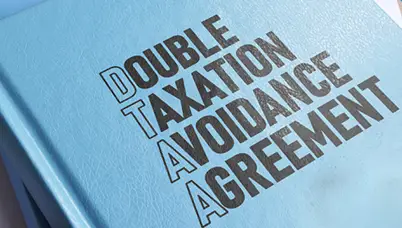Where is the Rupee Headed?
Posted On Monday, Mar 30, 2015
 The Rupee has been the fourth best performing currency, in the last one year. The dollar index has strengthened and is now trading around 99 levels. The Euro and the Japanese Yen have depreciated by 24 % and 19 % in the last one year. These countries are indulging in quantitative easing (i.e. printing of excess currency) to restore competitiveness in their respective currencies, which is leading to the further weakening of these currencies.
The Rupee has been the fourth best performing currency, in the last one year. The dollar index has strengthened and is now trading around 99 levels. The Euro and the Japanese Yen have depreciated by 24 % and 19 % in the last one year. These countries are indulging in quantitative easing (i.e. printing of excess currency) to restore competitiveness in their respective currencies, which is leading to the further weakening of these currencies.
However, the U.K which is expected to hike interest rates in the near term has also depreciated by 11.1 % against the US dollar in the last one year. The Indian currency has depreciated by 2.7 % against the US dollar over a one year period.
India’s macroeconomic parameters have improved with the current account deficit likely to be around 1 % of GDP in the current financial year versus 3.8 % in the previous year. Lower oil and commodity prices because of a slowdown in the global economy and the Indian electorate voting for a stable government has led to robust capital flows amongst other factors.
India also received around USD 42 billion in FPI in 2014 and till date USD 11.62 billion inflows in 2015. Gold imports have moderated as gold prices have fallen by 15.4 % on a year on year basis. RBI in the current financial year has added USD 34 billion to its reserves and has added USD 28 billion to its net forward positions. The total buying put together by RBI has been around USD 62 billion in the current financial year. This has prevented the appreciation bias in the India Rupee as RBI has absorbed the excess flow of dollars in the system.
The Indian rupee on a Real Effective Exchange Rates (REER) basis is currently overvalued to the extent of 12.7 %. Most of the inflows in the Indian market have been through the debt market with 25 billion USD inflows last year. The current account deficit which could average around 50 billion USD in the coming years requires to be funded by capital flows, by FPI and FDI. With the US Federal Reserve expected to hike interest rates in the month of June, volatile capital flows which has entered the Indian market in search of higher yields may exit.
India has been one of the best performing markets in both equity and debt. India also has the higher number of downgrades in earnings estimates; this has taken the Indian equity market in an overvalued zone, which could be prone to correction in the coming years as on a valuation basis, the equity markets look expensive. Since foreign investors have made decent returns in the equity and fixed income markets, India could be few markets in which FII may sell to book profits. Given this background, RBI strategy of buying dollars in time of euphoria and selling minimum amount in time of panic to avoid undue volatility is a sound strategy. Another concern is the total external debt stands around USD 457 billion and the total forex reserve is USD 338 billion. Corporates have been borrowing heavily in the overseas markets due to low interest rates prevailing in these markets during the last 5 years.
The rupee should trade in the range of 62 to 64 levels in the near future, as FII limits in Government securities have been exhausted and equity market flows have been muted during the current calendar year. We expect the currency to depreciate slowly as India try to increase its global competitiveness in the manufacturing sector. The government has also committed to Make in India initiatives which require the currency to be competitive.
Data Source: Bloomberg
Disclaimer, Statutory Details & Risk Factors:
The views expressed here in this article / video are for general information and reading purpose only and do not constitute any guidelines and recommendations on any course of action to be followed by the reader. Quantum AMC / Quantum Mutual Fund is not guaranteeing / offering / communicating any indicative yield on investments made in the scheme(s). The views are not meant to serve as a professional guide / investment advice / intended to be an offer or solicitation for the purchase or sale of any financial product or instrument or mutual fund units for the reader. The article has been prepared on the basis of publicly available information, internally developed data and other sources believed to be reliable. Whilst no action has been solicited based upon the information provided herein, due care has been taken to ensure that the facts are accurate and views given are fair and reasonable as on date. Readers of this article should rely on information/data arising out of their own investigations and advised to seek independent professional advice and arrive at an informed decision before making any investments. Please visit – www.quantumamc.com/disclaimer to read scheme specific risk factors.
Related Posts
-

Navigating NRI Investments : Understanding Double Taxation Avoidance Agreement (DTAA)
Posted On Friday, May 09, 2025
A recent ruling by the Income Tax Appellate Tribunal (ITAT), Mumbai around capital gains arising out of redemption of mutual fund units by NRI investors are not taxable in India
Read More -

Debt Monthly View for April 2025
Posted On Wednesday, May 07, 2025
In April 2025, the Reserve Bank of India...
Read More -

Equity Monthly View for April 2025
Posted On Wednesday, May 07, 2025
April 2025 witnessed a reversal in FPI flows and an ease of global tariff related uncertainties, leading to a rise in broader indices.
Read More



